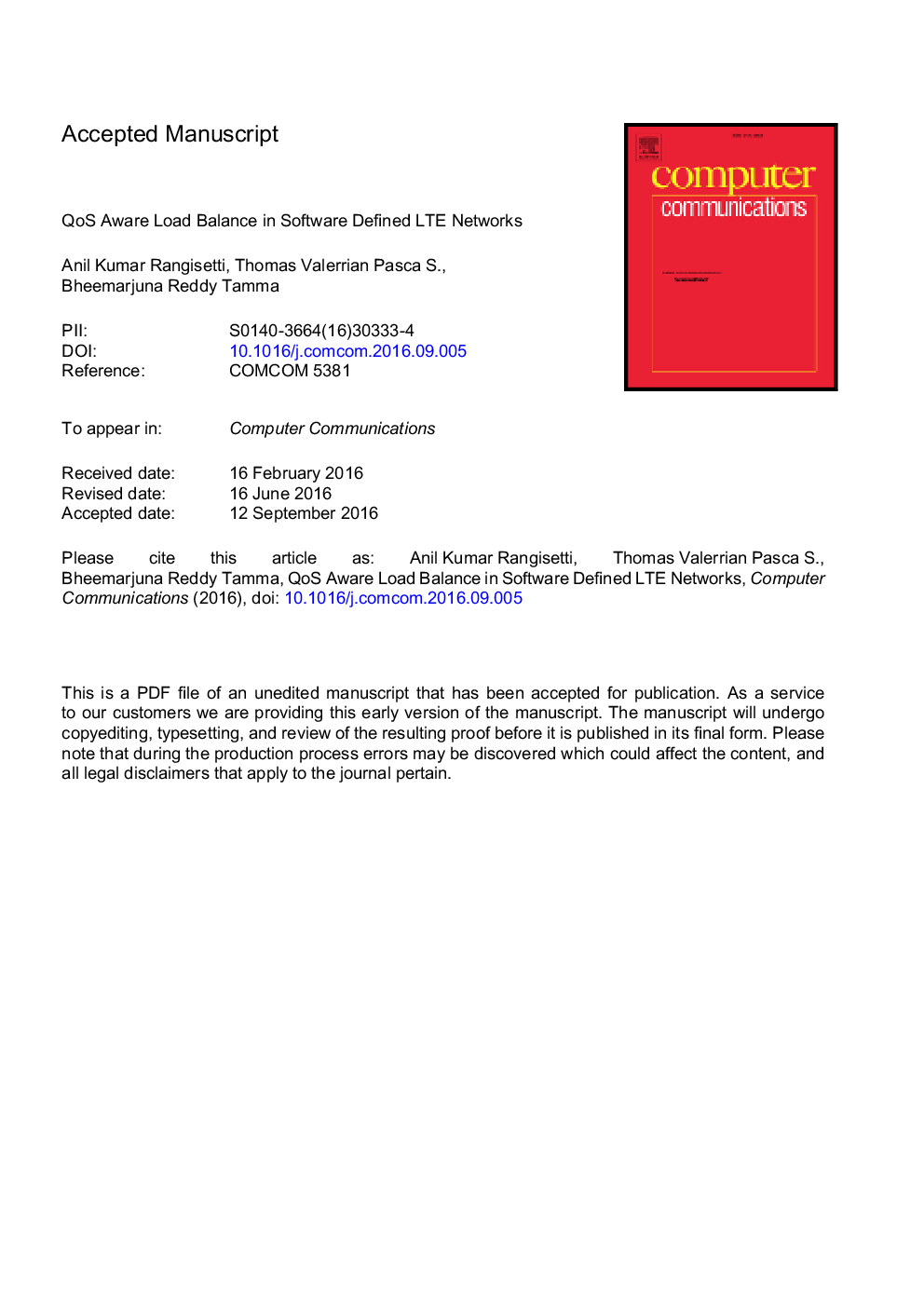| کد مقاله | کد نشریه | سال انتشار | مقاله انگلیسی | نسخه تمام متن |
|---|---|---|---|---|
| 4954524 | 1443324 | 2017 | 38 صفحه PDF | دانلود رایگان |
عنوان انگلیسی مقاله ISI
QoS Aware load balance in software defined LTE networks
دانلود مقاله + سفارش ترجمه
دانلود مقاله ISI انگلیسی
رایگان برای ایرانیان
موضوعات مرتبط
مهندسی و علوم پایه
مهندسی کامپیوتر
شبکه های کامپیوتری و ارتباطات
پیش نمایش صفحه اول مقاله

چکیده انگلیسی
Exponential growth of mobile subscribers and various application data traffic requirements cause exorbitant load in Long Term Evolution (LTE) networks. Telecom operators are considering small cells and Wi-Fi for handling this huge traffic demand. As User Equipments (UEs) are typically associated with a near-by cell (eNB), spatio-temporal variation in traffic demands makes the LTE networks suffer from load imbalance problem. Due to the distributed nature of eNB operation in LTE Radio Access Network (RAN), traditional solutions to tackle load imbalance problem could lead to excessive overhead over X2 interface. Hence, managing densely deployed cells is very challenging in the existing distributed LTE RAN. In this work, load imbalance issue is addressed by proposing a centralized Software Defined LTE RAN (SD-LTE-RAN) framework and a novel QoS Aware Load Balance (QALB) algorithm. For taking load balance decisions, the QALB algorithm considers loads of neighbor cells, QoS profiles of UEs and their expected throughputs w.r.t. neighbor cells. Unlike existing load balance algorithms, it does not change handover-offset parameters of cells to avoid ping pong handovers. The proposed framework and QALB algorithm are implemented in NS-3 simulator. In various load balance scenarios, proposed QALB algorithm is able to maintain better QoS data rates (> 80% of their configured Guaranteed Bit Rates (GBRs)) for more than 70% of the cells in the network. While existing load balance algorithms are able to do the same for only 50% of the cells in the network. In overall, the QALB algorithm is able to decrease the total network overload by 15% compared to existing load balance algorithms. We also evaluated the QALB algorithm in mobility scenarios and identified that it is able to decrease average network overload by 10% compared to existing load balance algorithms. To evaluate the network wide fair load distribution, we defined load balance index (LBI) using Jain's Fairness Index.
ناشر
Database: Elsevier - ScienceDirect (ساینس دایرکت)
Journal: Computer Communications - Volume 97, 1 January 2017, Pages 52-71
Journal: Computer Communications - Volume 97, 1 January 2017, Pages 52-71
نویسندگان
Anil Kumar Rangisetti, Thomas Valerrian Pasca S., Bheemarjuna Reddy Tamma,